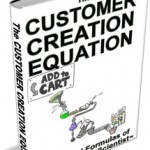Forget Sexy Graphics. Go Find Some Calipers.
Whether you’re an attorney or you sell baby food, chances are that more and more of your marketing, customer service, even customer transactions are taking place online. But there’s so much advice on what your website needs to look like and how it should perform, about user experience, design and content, how do you know what to focus on so your website fuels your business goals?
As someone who makes a living helping people increase their online profits, I can tell you it’s in one word: Conversion.
Conversion is the act of moving people through the process from looking for something, to buying it from you. In traditional mediums, that meant spending millions of dollars on advertising to get in front of your customers, then wowing them with emotion-packed messaging.
That simply doesn’t work for online marketing.
Online marketing is far more mathematical. To begin with, most companies have a conversion rate of about 2%. That means that if 1,000 people visit a site today, only 20 will buy something. But let’s say that, by making small changes that have been tested on similar sites—like increasing the size of the “Add to Cart” button—those companies could increase their conversion rate by 1%. That’s a 50% increase in sales.
There are many small changes like that that will steer visitors to take action. That’s why we want them there in the first place. We want them to join an email list, sign up for a newsletter, join a purchasing program or buy something. Conversion experts, like me, constantly study and test which incremental changes promote conversion behavior. We have worked with hundreds of customers, making small changes and measuring the impact. Just as turning the rudder of a ship a few degrees completely alters where the ship lands, small changes on a site can alter where a business winds up. Those incremental changes are seldom the kind of eye-catching, state-of-the-art, sexy changes that make site owners proud.
But they are the ones that make profits rise.
My new book, The Customer Creation Equation, and this blog, are about those incremental changes. How to find the ones most likely to increase conversion rate. How to implement, test, and measure them to make a website generate profits. Sign up for a guide of action steps to transform not only your website, but the future of your business!
[signature]


